A kid in the candy store is an expression that has always brought out the imaginary child out of all of us. The thrill of having all the choices of sweets you want makes you jittery with delight and anticipation as your mouth waters. You dip your hand in several jars and stuff your face with as much candy as you can and before you know it, you are sick to your stomach. Choosing a discus can be similar to this, except for the edibility aspect.
I remember the times when my coach would tell me to choose which new discus equipment to buy out of a brochure. With all the pretty colors, the choices became difficult. Should I choose the 85 percent rim weight or the 90? The Hollowood or the Denfi. The OTE or the Gill. The choices are so numerous but being that I am no longer a Kid and discus equipment is not as affordable as candy, I have to be very careful with my choices. Today we will discus what every discus thrower should know before choosing a discus and why.
Some athletes and even coaches assume that the type of discus thrown is arbitrary. Many fail to consider the rim weight, the balance, the feel, the rim type, the width and the material. Failure to understand the importance of choosing the proper implement can result in shorter throws.
When choosing a discus, the following are the most important details that must be touched upon, they include:
Brand
- By far, in my opinion the best discus made today are done by Denfi, Gill (Hollowood), OTE, and pacer. My favorite has to be Denfi because they have a line up that is second to none. I can use all of the products on their line without a problem because I know they are all crafted with superior quality. You should stay away from cheap discus because they are bound to break or be bent out of shape easily. I have used a denfi ultimate spin discus for several years without any complaints. It is the top of many top throwers (It broke the world record) . Take a look at it below :

*CHROMED RIM. | |||
| *CARBONATE PLATES. | |||
| *RIM WEIGHT IS AROUND 85-88%. | |||
| *SPIN RATE ON REALEASE IS 10-16 REV.PER SECOND | |||
| *DESIGNED FOR 0 WIND AND HEADWIND. | |||
| *ALSO EXCELLENT I TAIL WIND. | |||
| *5-8% LONGER THROWS COMPARED TO OTHER DISCS. | |||

Rim Weight
- As you can observe above 85 percent rim weight is a safe range for advanced throwers. I must advice that beginners stay away from rim weights in the 80's until their technique gets good. I even know of some advanced throwers that still prefer 70 percent rim weight. A problem most beginners have is their inability to spin the discus properly. Remember that the faster the discus spins the better it rides in the air. Using rubber discs or dummy discs as I like to call them are a good way to begin because the rim weight is very low, which means it will spin well for beginners.
- A properly made discus sticks to your fingers like sandpaper. A lot of the cheaper discus made are made with rims that are hard to feel and grip, especially on bad weather days. A discus that does well to stick to the fingers in any weather is very important for training in bad weather conditions and throwing far in bad weather. Everybody has a different feel for what is tactile to their fingers but aluminum rims are usually the worst for grip in my opinion. Denfi Uses chrome which is a better feel in my opinion.
- After you've selected a discus, have fun with your discs. What I sometimes do is make some designs on my discus; put a mark I'm trying to reach on it; even name it. When you personalize your discus you build a connection with it which could help you throw farther haha. I remember sometimes I would speak to my discus as if it were real and tell it to do its job and fly.
Leave me a comment and let me know what you think! or email me at 0a4w@virginia.edu





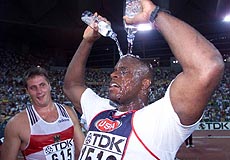





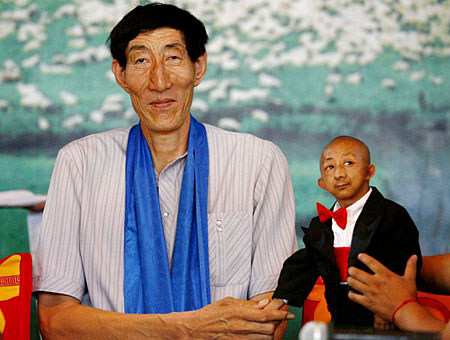 (
(
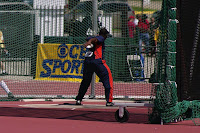

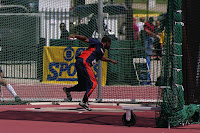
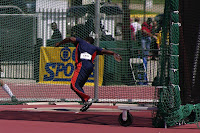





 :
:
 We can see here that Gerd likes the fast Nike zoom rotationals 3's
We can see here that Gerd likes the fast Nike zoom rotationals 3's We see that Lars Loves his slow Adidas Throwstars
We see that Lars Loves his slow Adidas Throwstars We see that at one point I enjoyed the Nike SD's
We see that at one point I enjoyed the Nike SD's No. 1 is the Nike SD because they are the best shoes
No. 1 is the Nike SD because they are the best shoes 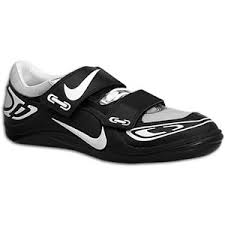 No. 2 is the Nike Zoom rotational IV because they are a step above the SDs (above) as far as speed goes, but offer just as much comfort and support in a very attractive color I feel. Although I must caution you that these throwing shoes are
No. 2 is the Nike Zoom rotational IV because they are a step above the SDs (above) as far as speed goes, but offer just as much comfort and support in a very attractive color I feel. Although I must caution you that these throwing shoes are  No. 3 is the original Nike Zoom Rotational (Red black) most throwers I talk to tell me that this is the best throwing shoe Nike ever made. Although I have never worn a pair myself. Due to the acclaim it has received, I give it my stamp of approval as well. As far as the speed goes, I hear it is
No. 3 is the original Nike Zoom Rotational (Red black) most throwers I talk to tell me that this is the best throwing shoe Nike ever made. Although I have never worn a pair myself. Due to the acclaim it has received, I give it my stamp of approval as well. As far as the speed goes, I hear it is  The New Balance ROT's are Poorly designed and have a rigid arch. I have not seen any national caliber thrower wear them or endorse them. People in general seem to stay away from these shoes. But as I mentioned this is just my opinion and I know New Balance makes better products.
The New Balance ROT's are Poorly designed and have a rigid arch. I have not seen any national caliber thrower wear them or endorse them. People in general seem to stay away from these shoes. But as I mentioned this is just my opinion and I know New Balance makes better products.
